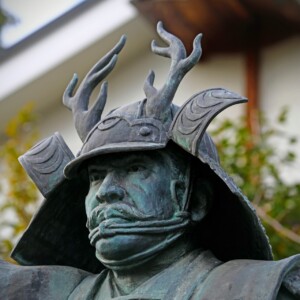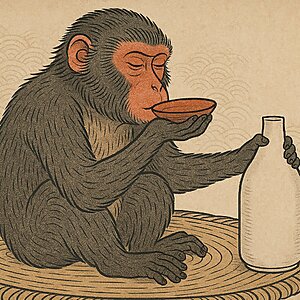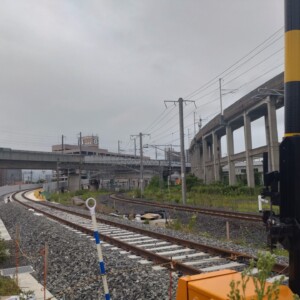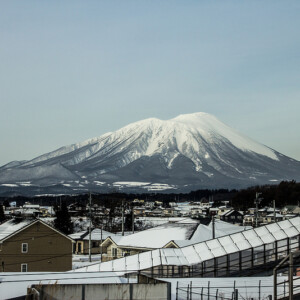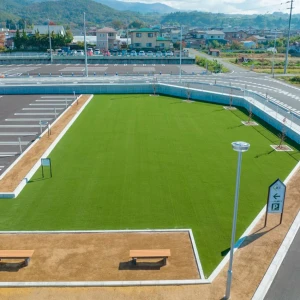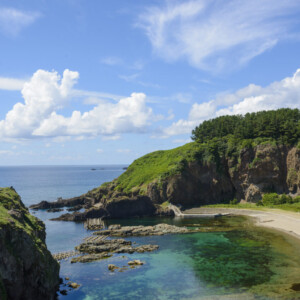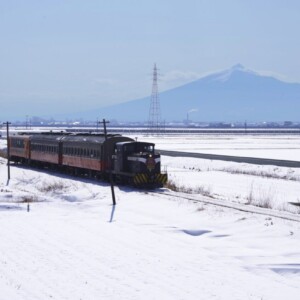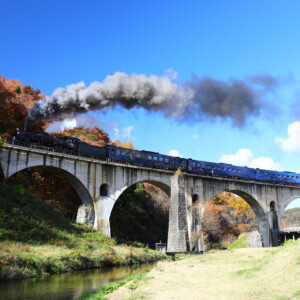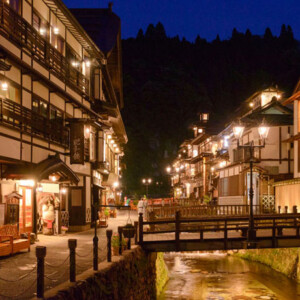
It's so big that the main castle is hazy and you can't see! Yamagata Castle, known as Kasumi Castle [Yamagata Prefecture]
table of contents
- 1 The Yamagata domain, which initially had 570,000 koku, was reduced to 50,000 koku by the end of the Edo period
- 2 Yamagata Castle, the largest castle north of Edo
- 3 Yamagata Castle (Kajo Park) under construction to restore its appearance from the Edo period
- 4 The few remaining remains of the Sannomaru citadel, "Yamagata Castle Sannomaru Earthworks"
- 5 The territory of the Yamagata domain came under government control after the Boshin War
- 6 Yamagata City was the capital of Yamagata Prefecture after the abolition of feudal domains and the establishment of prefectures
Yamagata City is the prefectural capital of Yamagata Prefecture. Yamagata Prefecture is divided into four regions: the Okitama region in the south, the Murayama region in the center, the Mogami region in the northeast, and the Shonai region along the Sea of Japan. Yamagata City belongs to the Murayama region, and was the location of the Yamagata Domain during the Edo period
The Yamagata domain, which initially had 570,000 koku, was reduced to 50,000 koku by the end of the Edo period
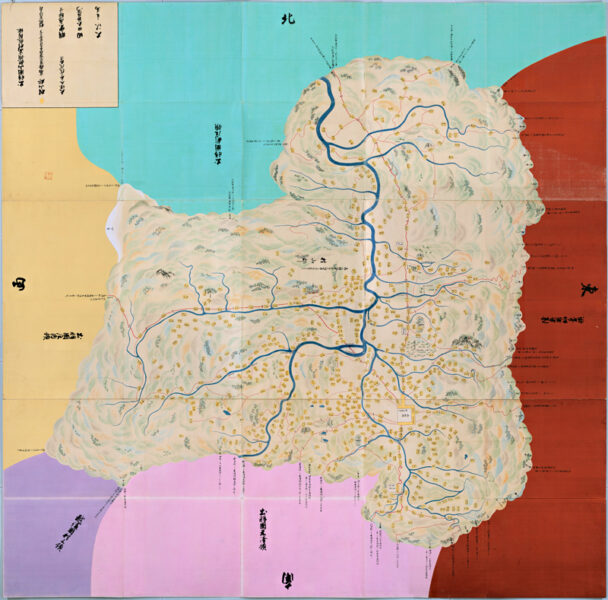
The Yamagata Domain was one of the largest domains under the shogunate, with a fief of 570,000 koku. It was founded by the Sengoku daimyo Mogami Yoshiaki, who fought on the Tokugawa side in the Battle of Sekigahara and was bestowed all of present-day Yamagata Prefecture and southern Akita Prefecture, excluding the Okitama region, by Tokugawa Ieyasu
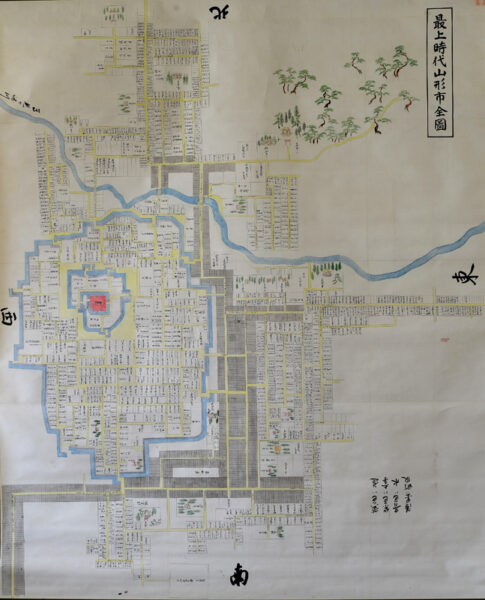
This momentum did not last long, and in 1622, as a result of a power struggle (the Mogami Disturbance) in which the Mogami clan and their vassals joined, the Edo Shogunate confiscated all of their territories
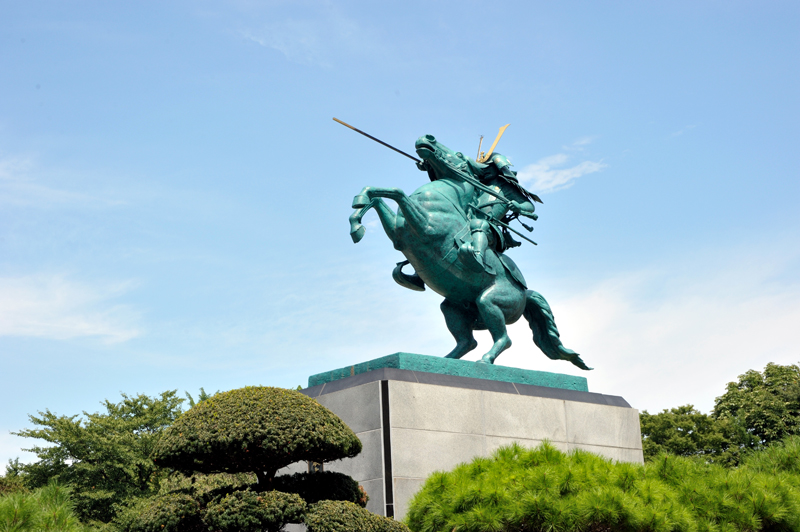
Torii Tadamasa succeeded the Mogami clan as lord, but the territory was halved to 220,000 koku, and several domains were established in the area, including the Shonai Domain, Kaminoyama Domain, Shinjo Domain, Tendo Domain, and Murayama Domain
The Yamagata domain was later occupied by Hoshina Masayuki, the son of the second shogun, Tokugawa Hidetada
However, Masayuki, who was said to be a wise ruler, was transferred to the Aizu domain after only seven years, and the lord of the Yamagata domain changed from the Matsudaira clan to the Hotta clan, Akimoto clan, and Mizuno clan in a short period of time. The domain's kokudaka (rice yield) also continued to be reduced, and by the end of the Edo period it had fallen to 50,000 koku, less than one-tenth of its original value
Yamagata Castle, the largest castle north of Edo
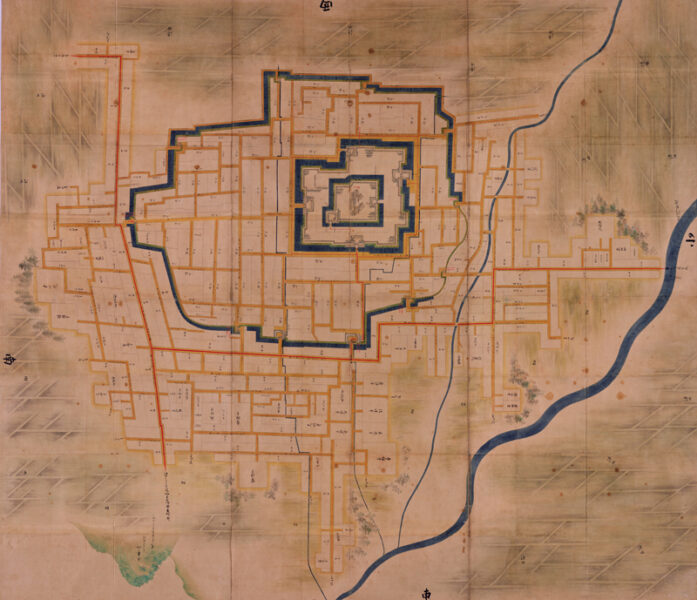
Yamagata Castle was built by Shiba Kaneyori (also known as Mogami Kaneyori) in 1357. It was later renovated by the 11th head of the Mogami clan, Tono Yoshimitsu, who became a feudal lord with a fief of 570,000 koku, and the moat and stone walls of the Ninomaru bailey were further renovated by Torii Tadamasa
Yamagata Castle does not have a castle tower, but consists of Honmaru in the center, Ninomaru outside it, and Sannomaru surrounding it. Sannomaru covers an area of about 235 hectares, which is the size of 50 Tokyo Domes
It is larger than Himeji Castle (a national treasure in Himeji City, Hyogo Prefecture), one of the largest castles in Japan, and was nicknamed "Kajo" (Mist Castle) or "Kasumigajo" (Mist Castle) because the main keep was obscured by mist
However, maintaining this scale seems to have been a source of concern for the Yamagata domain, whose holdings had been reduced to 50,000 koku at the end of the Edo period

At present, most of the Sannomaru area of Yamagata Castle has been turned into urban space, and no buildings remain in the Honmaru or Ninomaru areas
Since the Meiji period, the remains of the Honmaru and Ninomaru have been developed into Kajo Park, a popular cherry blossom viewing spot and a place of relaxation for local residents
Additionally, a baseball field, gymnasium, and museum were built on the large grounds, and the former main building of Saiseikan (now Yamagata City Museum of Local History), a nationally designated important cultural property, was also relocated and restored
Yamagata Castle (Kajo Park) under construction to restore its appearance from the Edo period

In 1979 (Showa 54), Yamagata City celebrated the 90th anniversary of its establishment as a city, and as a commemorative project, began the development of Kasumi Castle Park, with the aim of recreating the former appearance of Yamagata Castle
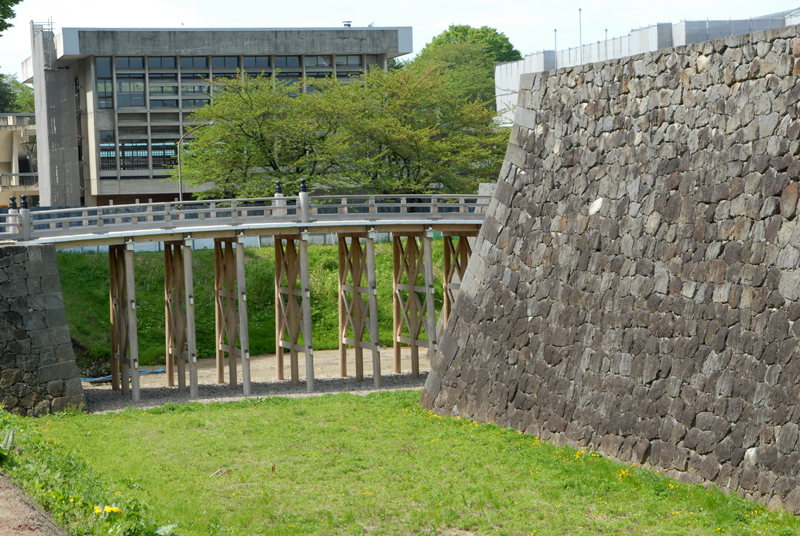
Restoration of the Ninomaru Higashi Otemon Gate was completed in 1991 (Heisei 3), and the Honmaru Ichimonjimon Otemon Bridge was completed in 2005 (Heisei 17), and the castle is gradually being restored to its former appearance
Excavation surveys of the remains of the Honmaru will begin in 2012, and the site is scheduled to become the "Honmaru Palace Square," where various events will be held. The Honmaru Palace will also be restored using CG and made available to the public as a VR experience
The baseball field will be demolished in 2018 (Heisei 30), and the site will be turned into the "History Square." A plaza will also be developed on the site of the Yamagata Prefectural Gymnasium, which will be demolished in 2023 (Reiwa 5). Kasumigaoka Park is scheduled to be fully completed in 2033 (Reiwa 15)
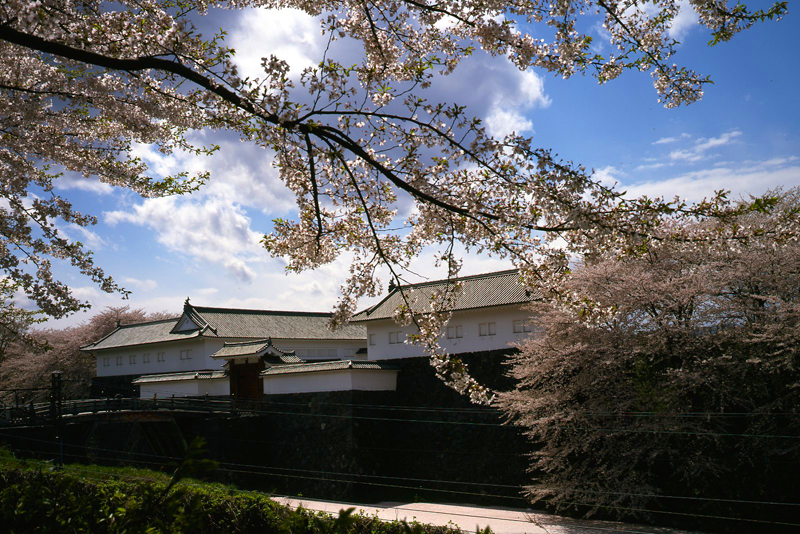
Yamagata Castle <Information>
- Facility name: Yamagata Castle (Kajo Park)
- Address: 1-7 Kashirocho, Yamagata City, Yamagata Prefecture (Administrative Office)
- Phone number: 023-641-1212 (Yamagata City Parks and Green Spaces Division)
- Opening hours:
- April 1st to October 31st / 5:00am to 10:00pm
- November 1st to March 31st / 5:30am to 10pm
- Admission fee: Free (However, some facilities within the park may require admission fees)
- Closed days: Open every day
- URL: Kajo Park
Google Map
The few remaining remains of the Sannomaru citadel, "Yamagata Castle Sannomaru Earthworks"

The only thing remaining from the Sannomaru ruins, which have been urbanized, is the remains of the Yamagata Castle Sannomaru earthworks
Earthworks are small mounds built like dikes to prevent enemy invasions, and the earthworks of Yamagata Castle also serve as the banks of the outer moat. The earthworks were built along the outer perimeter of the Sannomaru, which was about 6.5 km long, but only a few dozen meters remain today near Tokamachi
The ruins of Yamagata Castle, including the Sannomaru earthworks, are designated as a national historic site
Yamagata Castle Sannomaru Earthwork Ruins <Information>
- Facility name: Yamagata Castle Sannomaru Earthwork Ruins
- Location: Near Tokamachi 1-1, Yamagata City, Yamagata Prefecture
- Phone number: 023-641-1212 (Cultural Assets Section, Cultural Creative City Division, Planning and Coordination Department, Yamagata City)
- Free tour
- *There is no dedicated parking lot
- access:
- Train: JR Yamagata Station (Yamagata Shinkansen, Ou Main Line, Senzan Line, and Aterazawa Line available) Approx. 10 minutes walk from the east exit of Yamagata Station
- By car: Approximately 15 minutes from Yamagata Zao IC on the Yamagata Expressway
Google Map
The territory of the Yamagata domain came under government control after the Boshin War
During the Meiji Restoration, the Boshin War (1868-1869) broke out between the newly established government and the feudal domains that defended the former Edo Shogunate
The battle ended with a victory for the new government forces, and with the exception of a few domains in Yamagata, such as Shinjo Domain, which sided with the new government forces, the domains that were on the side of the former shogunate had their territories reduced (genpou) or confiscated (kaieki)
As for the Yamagata domain, they initially fought on the side of the government, but later joined the Oshu-Uetsu Alliance, an organization in which domains in the Tohoku and Hokuriku regions united to fight against the new government forces. As a result, after the defeat, their chief retainer was executed and the domain lord was transferred (transferred) to Omi Province (Shiga Prefecture)
Territories without a lord were confiscated and placed under government control
Yamagata City was the capital of Yamagata Prefecture after the abolition of feudal domains and the establishment of prefectures
In July 1871 (Meiji 4), the feudal domains were abolished and replaced with prefectures, and seven prefectures were established in what is now the Yamagata area: Yamagata Prefecture, Yonezawa Prefecture, Kaminoyama Prefecture, Tendo Prefecture, Shinjo Prefecture, Oizumi Prefecture, and Matsumine Prefecture
Oizumi Prefecture and Matsumine Prefecture, which covered most of the present-day Tsuruoka City and Sakata City, respectively, were merged in November of the same year to form Sakata Prefecture. At the same time, Yonezawa Prefecture became Okitama Prefecture, and the other areas were merged to form Yamagata Prefecture, and in 1875 (Meiji 8), Sakata Prefecture was renamed Tsuruoka Prefecture
One year later, Yamagata Prefecture, Okitama Prefecture, and Tsuruoka Prefecture merged to form the current Yamagata Prefecture
Mishima Michitsune as the first governor of Yamagata Prefecture , and the prefectural office was located in what is now Yamagata City.
Yamagata City was deemed suitable as a distribution hub, as it was on the Ushu Kaido road, a major artery in the Tohoku region, and had a thriving shipping network on the Mogami River.It is also said that the prefectural office was located here, which was under government control, because the large Shonai and Yonezawa domains were anti-government
Mishima Michitsune promoted the modernization of the city, and the newly constructed Western-style prefectural office building, police station, normal school, Nanzan School, police headquarters, Minamimurayama County Office, Industrial Museum, silk mill, and Saiseikan were all concentrated in the area
However, most of the buildings were destroyed in the Great Yamagata Fire of 1911 (Meiji 44), and all that remains today are the former Saiseikan main building and the former Yamagata Normal School main building. The fire also consumed most of the private homes remaining from the Edo period




![[Yamagata Prefecture] Let's go try the delicious, locally produced soft serve ice cream at Yamagata's roadside station! Yamagata Catch](https://jp.neft.asia/wp-content/uploads/2025/07/2c2e7024e6ed08990103582514a5844e-150x150.jpg)
![[Ramen Kingdom, Yamagata Prefecture] 5 famous restaurants that offer Yonezawa Ramen, a light soy sauce-rich noodles! 4976647_m (1)](https://jp.neft.asia/wp-content/uploads/2022/02/4976647_m-1-150x150.jpg)
!["Mogami safflower" certified as a Japanese heritage and Japanese agricultural heritage [Yamagata Prefecture] Mogami safflower](https://jp.neft.asia/wp-content/uploads/2022/12/30121446_m-1-150x150.jpg)

![[Yonezawa City, Yamagata Prefecture] Visit a hot spring connected to the Uesugi family of the Yonezawa Domain 1530_Onogawa Onsen Foot bath](https://jp.neft.asia/wp-content/uploads/2023/05/4ed5d5851f7d92ca3b0ebed3220d6418-150x150.jpg)
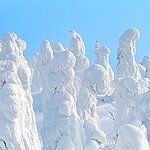
![Nagai, the former Yonezawa domain boat transport town that flourished through the Mogami River [Yamagata Prefecture] 71_Mogami River Bridge (Flower Nagai Line) 2](https://jp.neft.asia/wp-content/uploads/2023/05/1387761f176bfc409893953e0b93371f-150x150.jpg)
![[Yonezawa City, Yamagata Prefecture] The ultimate in luxury where you can enjoy Yonezawa beef with hot springs! 1958232_m](https://jp.neft.asia/wp-content/uploads/2022/01/1958232_m-150x150.jpg)
